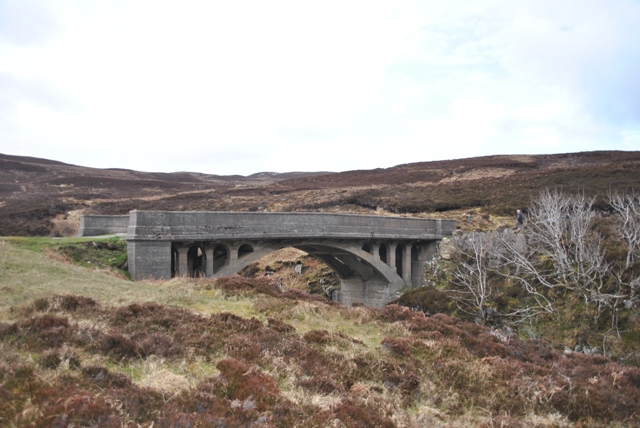Scotland Travel Blog March 2016
“Scottish Bridges”
Anyone that follows the Blog on a regular basis will know that I tend to get my inspiration for subject matters from the things that people request for their customised tours. This month, for the very first time, I was asked by a group of bridge engineers to create a tour that would feature some of the more interesting examples of bridges in Scotland. That sounded like a bit of a busman’s holiday to me, but there are actually some rather photogenic bridges that are of interest even if you don’t understand the mechanics of their construction.
I’m not going to talk about the Forth Rail Bridge in this list as it is so famous and such an iconic symbol of Scotland that it doesn’t really need anything more written about it. I will, however, add in this photograph (taken on New Year’s Day in 2015) to show that something so vast and functional can actually have a certain beauty of its own.
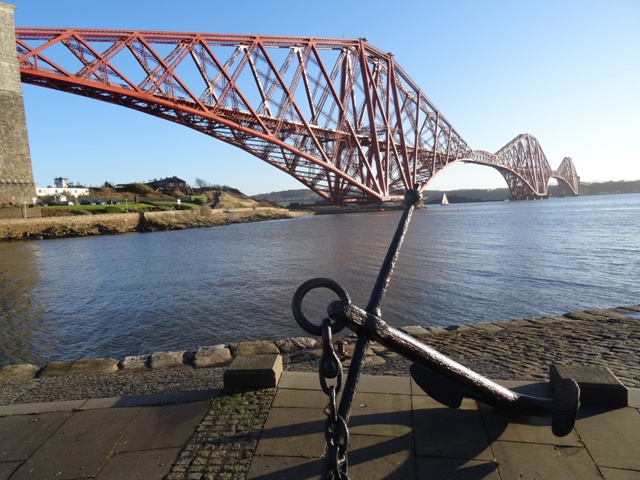
Old Brig of Dee (Invercauld) – This is a well known bridge and it has appeared on lots of shortbread tins, calendars, and postcards. So even if you’ve never been there before, it will probably feel vaguely familiar. The bridge was built in 1752 as part of the network of military roads that were being developed to enable “Redcoat” soldiers to be quickly mobilised against any future Jacobite uprisings in the Highlands. Despite its strategic military function, the bridge has pleasing aesthetics and compliments its woodland surroundings. The only problem comes from the ferocious midges that pounce on you when you stand still long enough to take a picture.
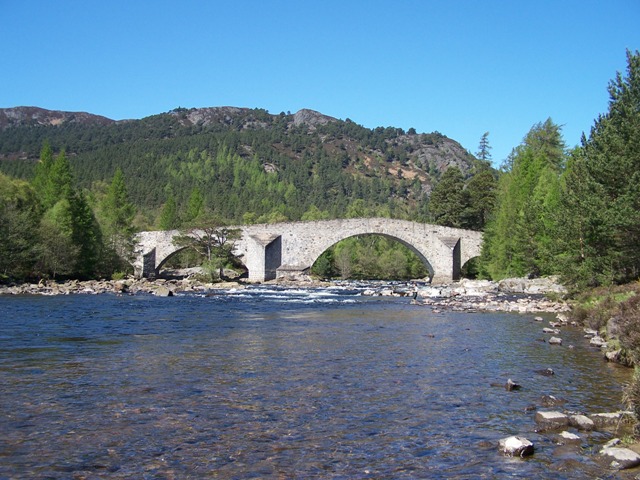
Bridge over the Atlantic (Isle of Seil) – A very grand title for what is actually quite a modest bridge that only crosses a gap of water about 70 feet wide. But the water that it crosses is Atlantic sea water so it can lay legitimate claim to its grand title. The Bridge dates from 1793, but the thing that makes it interesting is the Tigh na Truish Inn that stands beside it. The Inn pre-dates the bridge and its name translates from Gaelic as the “house of the trousers”. It originates from the period after the 1745 Jacobite Rebellion when the British Government imposed harsh laws to crush the traditions of the Highland Clans. One of these laws forbade the wearing of kilts, but the inhabitants on the Isle of Seil defied this law by only changing into trousers when they were leaving the island. The Inn became the place for the change of attire and the name stuck.
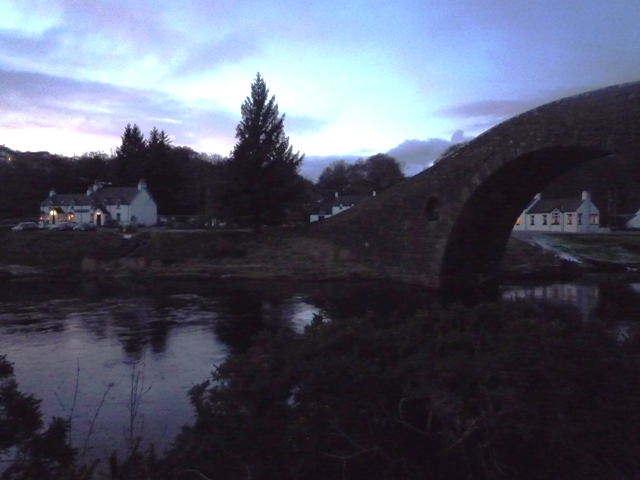
Kylesku Bridge (Assynt) – Arguably the most beautiful bridge in Scotland, the Kylesku Bridge was built in the early 1980’s to replace the small car ferry that previously was the only means of crossing the narrows at the entrance to Loch Glendhu. Old bridges have their charm, but I can’t think of any old bridge that can match the grace of this minimalist design which manages to sweep a bend at the same time as it arches over the sea.
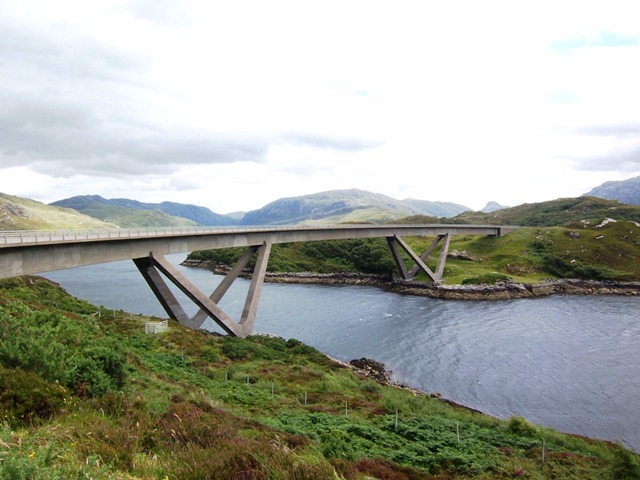
Dulsie Bridge (south of Nairn) – This bridge was built by the same engineer that built the Old Bridge of Dee (Major William Caulfield). The intriguing aspect of this old bridge is the difficulty that it must have posed to its 18th century builders. The keystone of the bridge is some 60 feet above the water level of the steep sided gorge that it spans. Anyone working on this bridge would have required a good head for heights and I imagine that there may well have been a few fatalities during its construction. Fortunately, they did a very good job as it was the only bridge on the River Findhorn that survived the “Muckle Spate” of 1829 when the flood waters rose to be just 3 feet below its keystone. Our picture just can’t convey how awesome that event must have been.
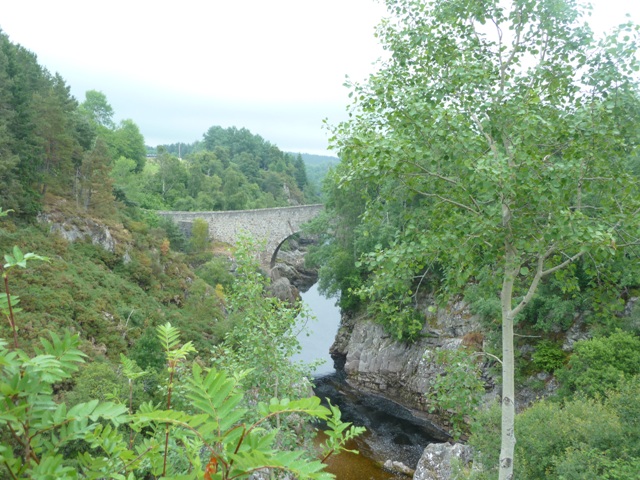
Roman Bridge (near Netwon Stewart) – Carr Bridge, in the Cairngorms National Park, is a more famous example of a “packhorse” bridge, but the Galloway Forest Park has its own, albeit more modestly proportioned, example. I find these bridges fascinating as they seem to be nothing more than the skeleton of a bridge, but the inherent structural stability of their design somehow keeps them standing. You can’t cross the Carr Bridge any longer as it would otherwise be subjected to the wear and tear of thousands of passing tourists. The Roman Bridge, on the other hand, is in such a secret location that it hardly sees any visitors at all and you need to walk about an hour from the nearest road to get to it. This all makes you wonder why they built a bridge here at all. Most old bridges are replaced, or have newer bridges built alongside them because they serve an important route of travel. But the places that the Roman Bridge once connected are as much a mystery as the origins of the bridge.
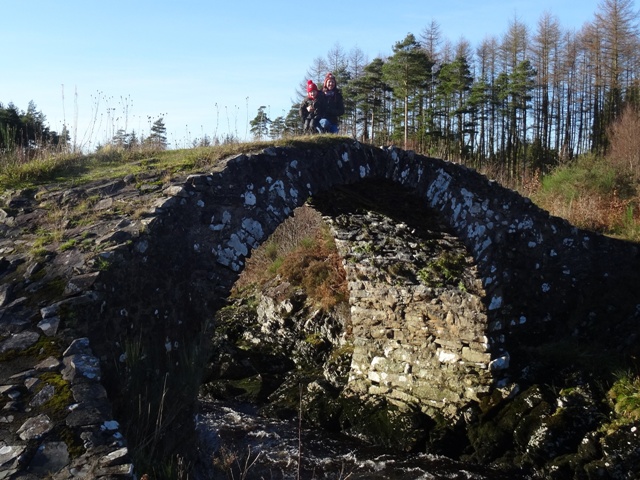
Bridge to Nowhere(Lewis) – Staying on the subject of bridges to nowhere, if you drive north from Stornoway on the B895 to Tolastadh you will eventually find the road peters out when it comes to a rather forlorn looking concrete bridge behind the lovely beach at Garry Bay. This is the infamous “Bridge to Nowhere” that was started by Lord Leverhume in the years after World War 1. Lord Leverhume had ambitions to create employment for the returning servicemen by building a road that would follow a coastal track from Tolsta to Port of Nis at the top of Lewis. Unfortunately, his ambitions were not shared by the local men who, after 4 years of fighting in the trenches, were tired of taking orders from the Upper classes and just wanted to get back to tending to the land on their family crofts. Work ceased after the bridge was built and now it stands as a sad and lonely reminder of something that might have been.
